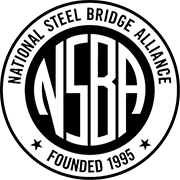National Steel Bridge Alliance
Design Resources
NSBA provides a number of resources to help engineers during the preliminary design phase. These resources work from various levels of refinement toward the goal of generating economical steel solutions. Most coarse are the Steel Span to Weight Curves which provide steel weights, in pounds per square foot of bridge deck, for various span arrangements. The next level of refinement is the Continuous Span Standards. The Standards include pertinent steel information, such as plate sizes, steel weights, and camber diagrams, for three-span bridges. Finally, NSBA's LRFD Simon design and analysis software, is the most refined resource and is a powerful tool for generating preliminary designs that meet project constraints.
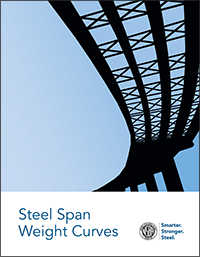 Steel Span to Weight Curves
Steel Span to Weight Curves
The Steel Span to Weight Curves are the quickest way to determine the weight of steel per square foot of bridge deck for straight, low skew, plate girder bridges. They are also a great way to compare various span arrangements and girder spacings. With very little effort the weight per square foot can easily be converted to a potential dollar value for the steel superstructure.
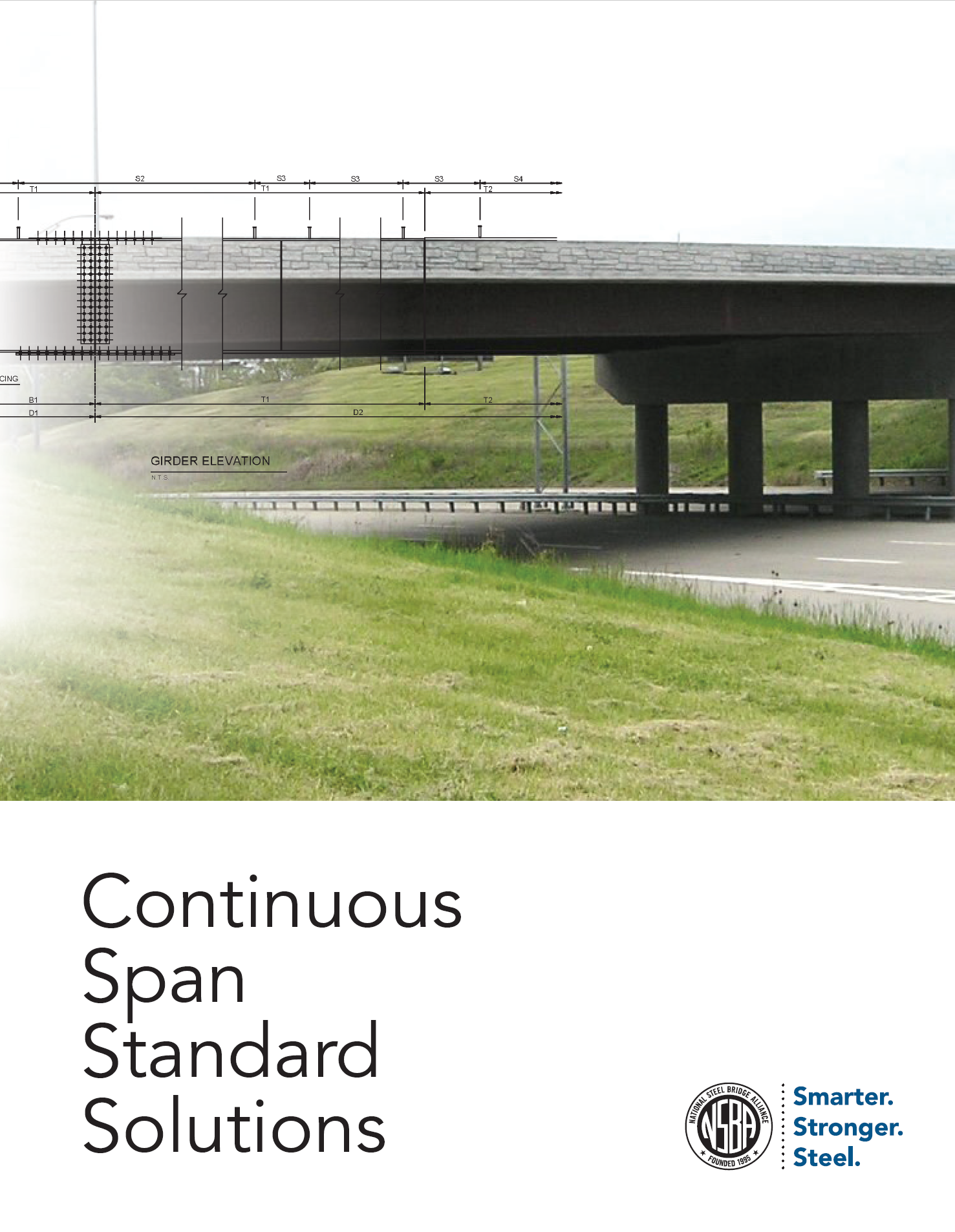 Continuous Span Standards
Continuous Span Standards
The Continuous Span Standards represent an excellent starting point for 3-span continuous steel plate girder design. They serve to help reduce the time required for preliminary bridge superstructure layout, girder plate sizing, and more.
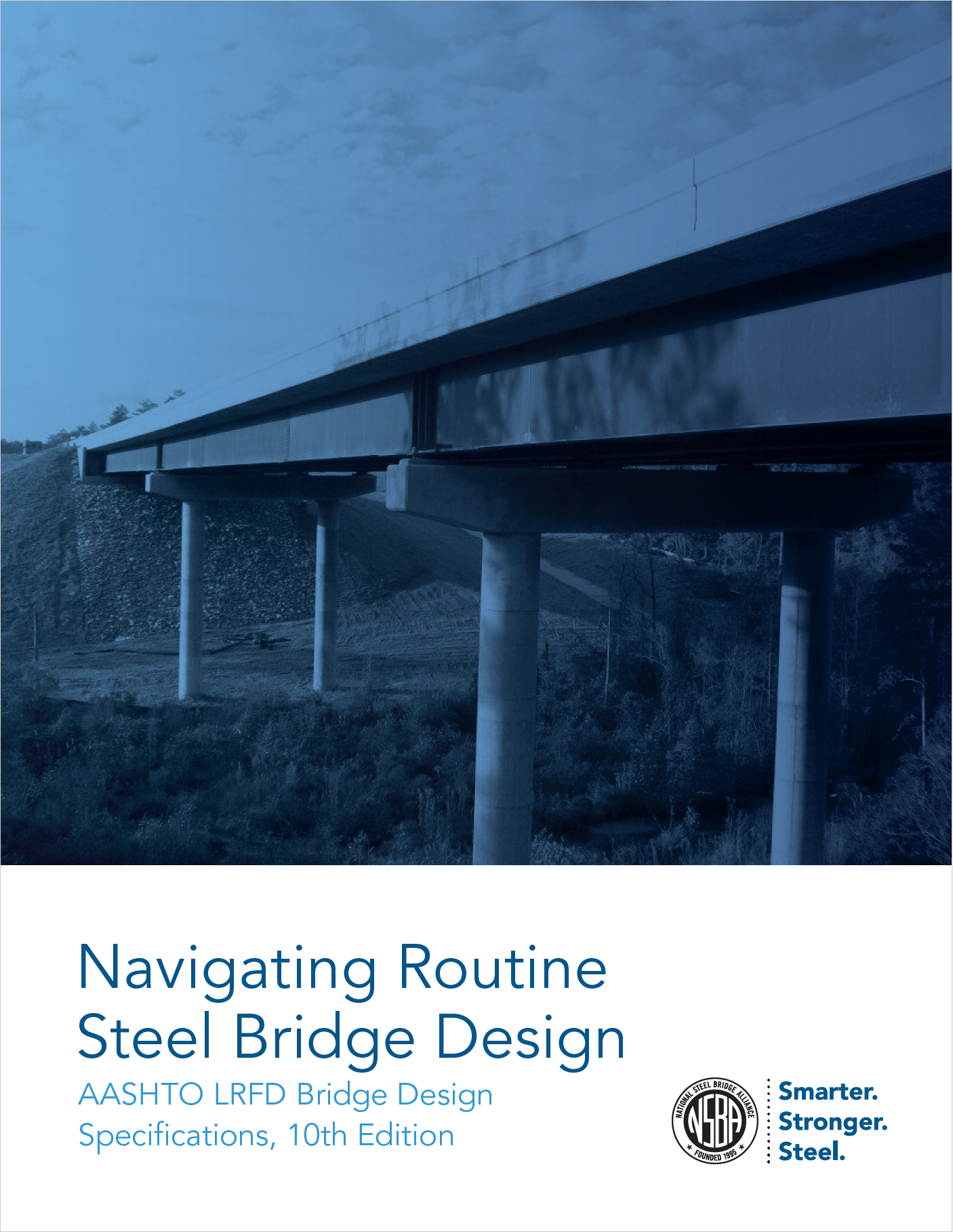 Navigating Routine Steel Bridge Design
Navigating Routine Steel Bridge Design
This guide is intended to complement the 9th Edition AASHTO LRFD Bridge Design Specification and addresses the design of steel superstructures for "routine steel l-girder bridges." It illustrates which provisions of the AASHTO Specification are applicable to the design of these types of structures, and perhaps more importantly, which provisions are not applicable or are only partially or conditionally applicable.
If a given bridge somehow falls partially outside the limits of the definitions of a "routine steel l-girder bridge" or outside the exclusions of this scope, this guide may still provide value to designers. The purpose of this guide is to help engineers streamline the design process, avoid unnecessary or misguided effort, and simplify their approach to the necessary tasks associated with the design of a more routine steel l-girder bridge. Read more about this guide in the February issue of Modern Steel Construction: Streamlined Design
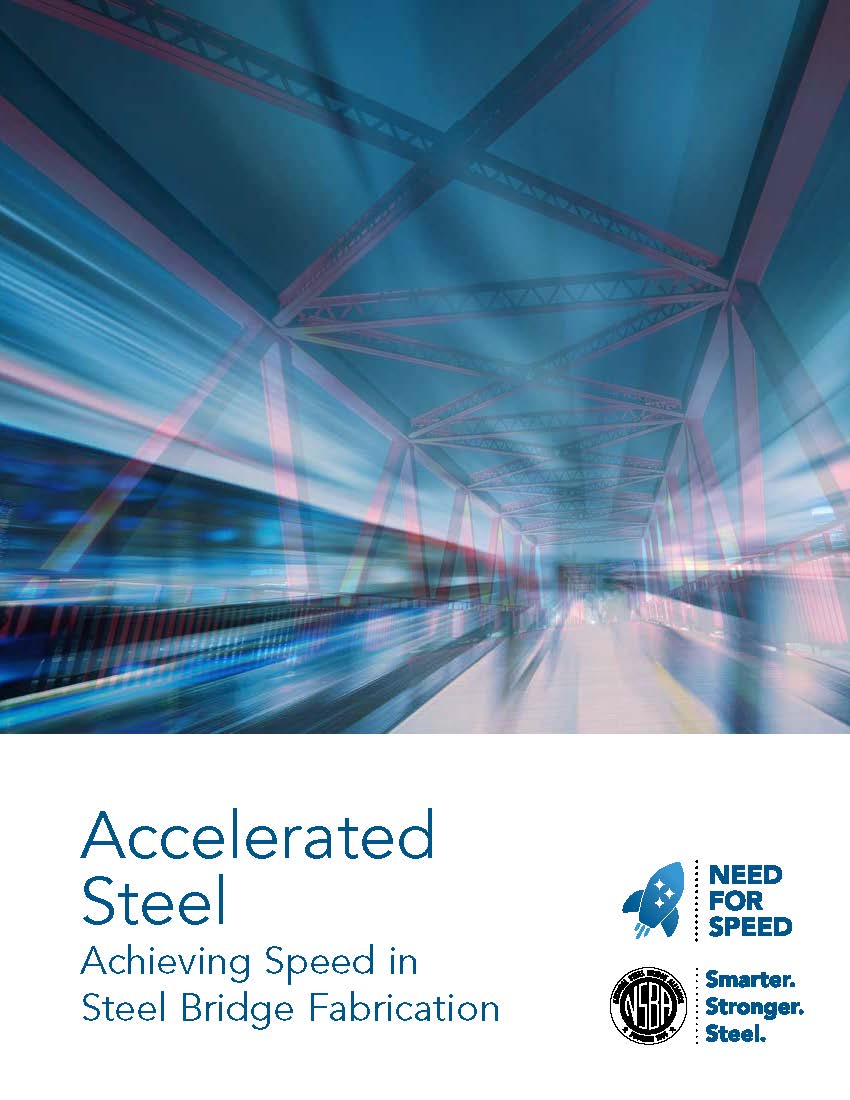 Accelerated Steel: Achieving Speed in Steel Bridge Fabrication
Accelerated Steel: Achieving Speed in Steel Bridge Fabrication
The key to accelerated steel bridge fabrication is seamless teamwork between the fabricator, owner, engineer, and contractor--and NSBA’s brand-new guide is designed to help you do just that.
Accelerated Steel: Achieving Speed in Steel Bridge Fabrication describes how each of these roles affects critical shop support activities, which can make or break the fabrication schedule. This guide describes the ideal schedule for every step of fabrication as well as the responsibilities for owners, designers, and general contractors.
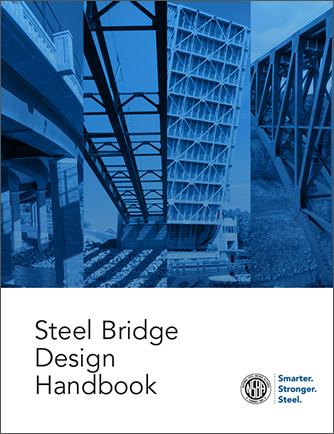 Steel Bridge Design Handbook
Steel Bridge Design Handbook
It's here! The 2022 edition of the Steel Bridge Design Handbook (formerly known as the Highway Structures Design Handbook) is now available as a free download. The new version includes the latest research and advice from the nation's top bridge experts as well as critical information on everything from the mechanical properties of steel to splice design to corrosion protection.
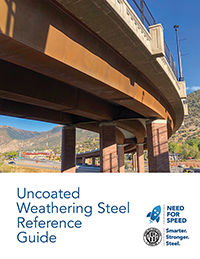 Uncoated Weathering Steel Reference Guide
Uncoated Weathering Steel Reference Guide
If speed is what you're after, then uncoated weathering steel (UWS) is your best choice! UWS doesn't require any applied coating--that means no time spent literally watching paint dry. NSBA's new Uncoated Weathering Steel Reference Guide is your go-to resource for using UWS in a variety of bridges in a diverse mix of environments.
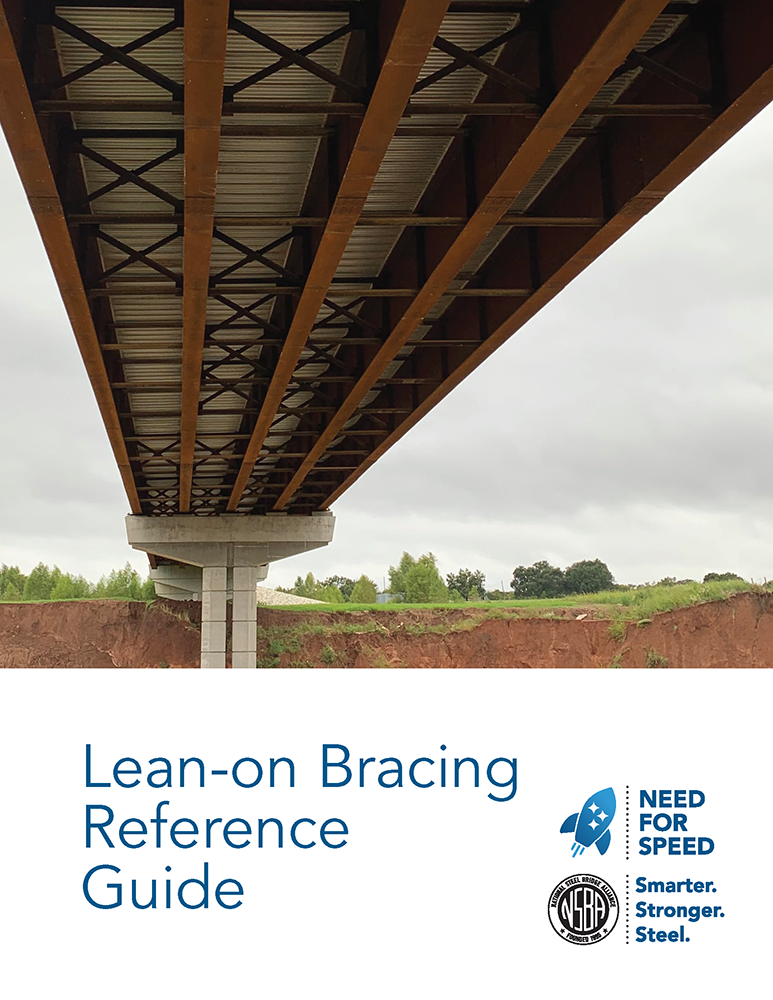 Lean-on Bracing Reference Guide
Lean-on Bracing Reference Guide
Cross-frames are one of the costliest elements in a steel bridge on a per-pound basis. Lean-on bracing reduces the number and complexity of cross-frames, which significantly impacts the speed of fabrication, speed of erection, and overall bridge cost. The new Lean-on Bracing Reference Guide shows bridge designers how to implement lean-on bracing in routine bridge designs with confidence and with minimal computational effort beyond that required for a traditional bracing system.
 LRFD Simon
LRFD Simon
Simon is a line-girder analysis software that can be used to analyze straight and low skew plate girder and tub girder bridges. Simon is perfect for those bridge projects that don't require a 3D finite model and where hand calculations would be too involved.
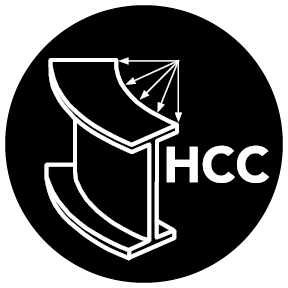 NSBA Heat Curve Calculator
NSBA Heat Curve Calculator
The introduction of horizontal curvature in steel plate girders by heat curving is a well-established practice that does not adversely affect the materials properties of the girder and can make a steel bridge more economical to fabricate. This spreadsheet is intended to assist Engineers with evaluating horizontally curved bridge girders in accordance with the Article 11.4.12.2.2 of the AASHTO LRFD Bridge Construction Specification.
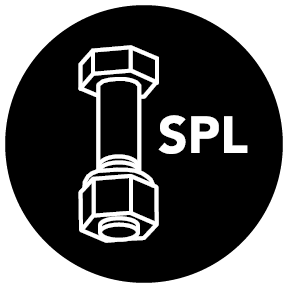 NSBA Splice
NSBA Splice
NSBA Splice takes the time consuming task of designing and checking a bolted splice connection and rewrites the process as a simple input and output form. NSBA Splice allows the designer to quickly analyze various bolted splice connections to determine the most efficient bolt quantity and configuration.
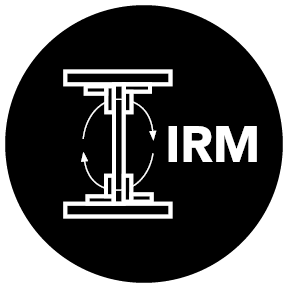 IRM Evaluator
IRM Evaluator
The IRM Evaluator automates much of the process for evaluation of built-up members for internal redundancy. The IRM Evaluator follows provisions of the new AASHTO Guide Specifications for Internal Redundancy of Mechanically-Fastened Built-up Steel Members evaluating internal redundancy and establishing a special inspection interval.
